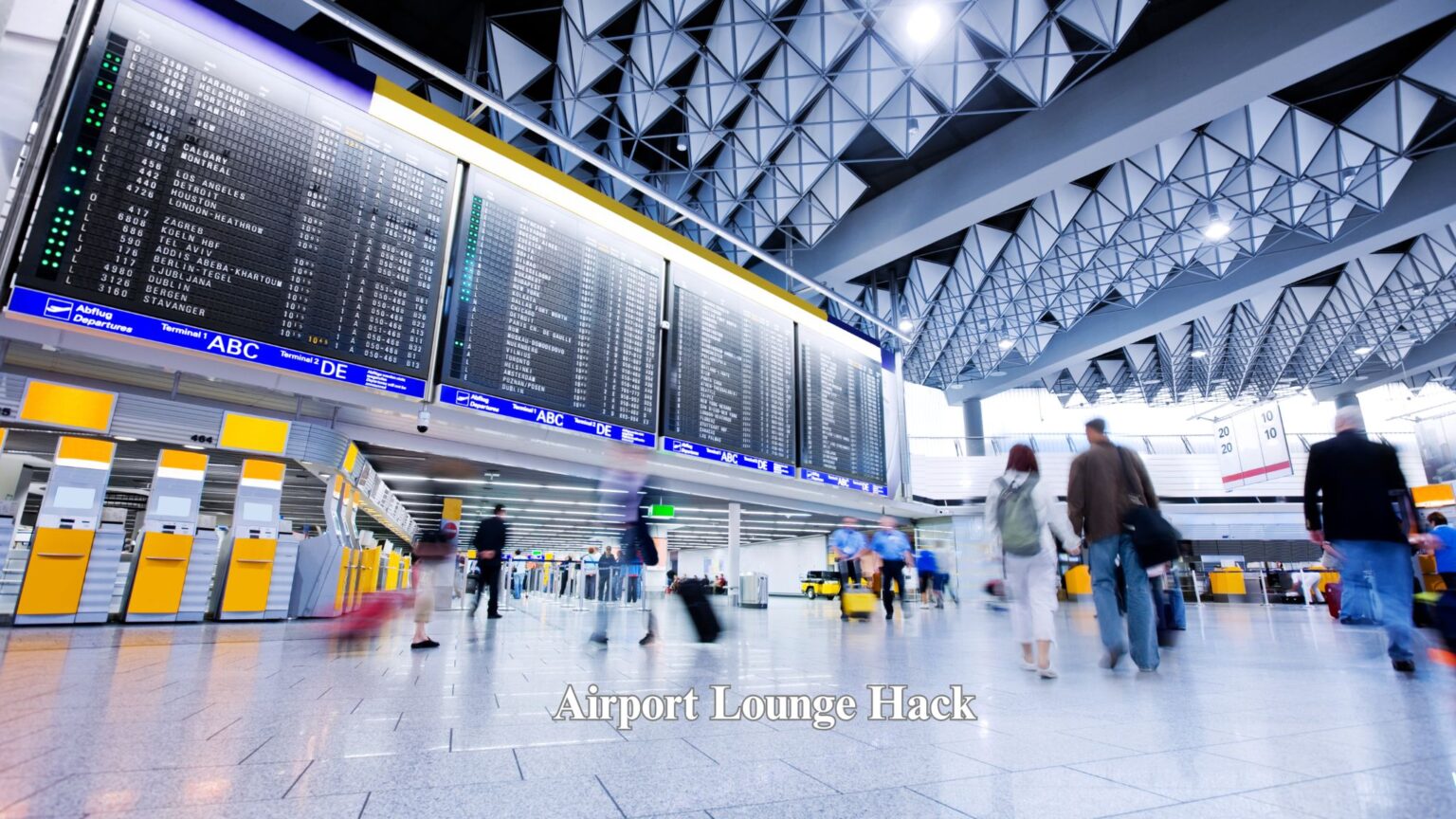After flying over 2 million miles across 85 countries in the past decade, I’ve turned airport lounge access into both an art and a science. What started as a way to escape crowded terminals has evolved into a comprehensive system that saves me more than $3,000 annually while dramatically improving my travel experience.
Most travelers think airport lounges are exclusive clubs reserved for first-class passengers or elite frequent flyers. The truth is far different. With the right knowledge and strategy, virtually anyone can access premium lounges worldwide for a fraction of what they’d spend on airport food, drinks, and services. More importantly, the time savings and productivity gains from lounge access have literally paid for themselves many times over.
In this detailed guide, I’ll reveal the exact methods I use to access lounges in over 95% of airports I visit, often for free or at massive discounts. These aren’t theoretical strategies—they’re battle-tested techniques I’ve refined through years of practical application and thousands of hours spent in lounges worldwide.
The Hidden Economics of Airport Spending
What You’re Really Paying at Airports
Before diving into lounge strategies, it’s crucial to understand the astronomical markup on airport services. After tracking my expenses meticulously for three years, I discovered that a typical 8-hour layover costs me $87 in food, drinks, and basic amenities when I’m stuck in the terminal.
A simple breakfast at most major airports runs $18-25, lunch costs $22-35, and dinner can easily exceed $40. Add beverages ($6-8 each), snacks ($4-12), and basic services like phone charging or Wi-Fi upgrades ($5-15), and the costs compound rapidly.
Airport alcohol pricing is particularly egregious. A beer that costs $3 at a grocery store sells for $12-18 at airport bars. Wine markups exceed 400% in most locations. Mixed drinks often cost $15-22 for standard pours that would be $6-8 at normal establishments.
The True Cost of Airport Productivity Loss
The financial impact extends beyond direct expenses to lost productivity and comfort. Trying to work in crowded gate areas means fighting for power outlets, dealing with noise and distractions, and lacking reliable internet connectivity.
I calculated that my productivity drops by approximately 60% when working in standard terminal areas versus lounge environments. For business travelers whose time has quantifiable value, this productivity loss represents significant opportunity costs that compound over multiple trips.
Sleep deprivation from uncomfortable seating during long layovers creates cascading effects that impact performance for days after travel. The cumulative health and productivity costs of poor travel conditions far exceed the direct financial expenses.
The Credit Card Strategy: Your Foundation for Access
Premium Travel Cards That Actually Pay for Themselves
The cornerstone of my lounge access strategy involves strategic credit card selection that generates more value than it costs in annual fees. This isn’t about collecting cards for the sake of collecting—it’s about mathematical analysis of benefits versus costs.
The Chase Sapphire Reserve: Despite its $550 annual fee, this card provides $300 in annual travel credits, Priority Pass membership worth $469, and various other benefits that total over $1,200 in annual value for active travelers.
The Priority Pass membership alone provides access to over 1,300 lounges worldwide. During a recent year of heavy travel, I used Priority Pass lounges 47 times, representing approximately $1,410 in lounge access fees ($30 average per visit) plus thousands in food and beverage savings.
The Platinum Card from American Express: The $695 annual fee seems steep until you analyze the comprehensive benefits package. The card provides access to Centurion Lounges, Priority Pass membership, airline lounge access, and over $1,400 in annual credits for various travel and entertainment expenses.
Centurion Lounges are among the world’s best, offering restaurant-quality food, premium alcohol, and business-class amenities. A single meal at a Centurion Lounge often exceeds $40-50 in value, making the card worthwhile after just 15-20 visits annually.
Business Credit Cards with Lounge Benefits: Many business credit cards offer lounge access benefits without the premium pricing of personal cards. The Capital One Spark Miles for Business provides Priority Pass membership for a $95 annual fee, creating exceptional value for business travelers.
Strategic Card Application Timing
I apply for premium travel cards strategically around planned periods of heavy travel to maximize signup bonuses and ensure I can utilize benefits immediately. This timing optimization increases the effective value of each card while minimizing periods where I’m paying fees without receiving proportional benefits.
Multiple card strategies require careful credit management and spending tracking to ensure annual fees are justified by actual benefits received. I maintain spreadsheets tracking benefits utilized versus fees paid for each card annually.
READ ALSO: The Pickpocket Techniques I’ve Seen in 50+ Countries (And How to Beat Them)
The Elite Status Fast Track
Manufactured Spending for Elite Qualification
Achieving airline elite status traditionally requires extensive flying or significant spending on airline-branded credit cards. However, strategic manufactured spending can accelerate elite qualification timelines dramatically.
I use airline dining programs, online shopping portals, and strategic credit card spending categories to earn elite qualifying miles without additional flights. These programs often provide 2-5 miles per dollar spent at participating restaurants and retailers.
Hotel elite status often provides reciprocal airline benefits and lounge access privileges. Some hotel programs offer fast-track elite status through credit card spending or promotional challenges that require minimal time investment.
Status Matching and Challenges
Airlines and hotels regularly offer status matching programs that allow travelers to transfer elite benefits between competing programs. I monitor these opportunities continuously and have successfully matched status across multiple programs using minimal qualifying activity.
Status challenges allow new customers to earn elite status through reduced requirements during promotional periods. These challenges often require 50-75% less activity than standard qualification requirements while providing full elite benefits.
Corporate and Group Programs
Many companies have negotiated elite status benefits for employees that extend to lounge access and other premium amenities. I research corporate travel programs extensively and have discovered several programs that provide elite-equivalent benefits through employer partnerships.
Professional organizations, alumni associations, and membership groups sometimes negotiate group benefits that include travel perks. These programs often fly under the radar but can provide substantial value for qualifying members.
The Day Pass Strategy: Selective Premium Access
When Day Passes Make Financial Sense
Sometimes purchasing individual lounge day passes provides better value than maintaining annual memberships, particularly for travelers who fly infrequently or visit airports with exceptional premium lounges.
I analyze the cost-per-visit calculation for each lounge access method annually. For some routes and airports, purchasing $35-65 day passes provides better value than maintaining $400-700 annual memberships when visit frequency is low.
Certain lounges offer experiences that justify premium pricing even for frequent lounge users. The Concorde Room at London Heathrow, Singapore Airlines Silver Kris lounges, and Emirates First Class lounges provide amenities worth their $75-150 day pass fees for special occasions.
Advance Purchase Discounts
Many lounge operators offer advance purchase discounts that reduce day pass pricing by 20-40%. I book these discounted passes during promotional periods even if I’m not certain I’ll use them, as most programs offer reasonable cancellation policies.
Some third-party platforms aggregate lounge access options and provide discounted rates compared to purchasing directly from lounge operators. These platforms sometimes offer last-minute deals that make premium access surprisingly affordable.
Group and Family Strategies
Day pass pricing often includes guest privileges that make group travel more economical. A $65 day pass that includes two guests provides exceptional value for family or small group travel compared to purchasing individual access.
Some lounges offer family day passes or children’s discounts that further improve the economics for travelers with children. These specialized pricing options are rarely advertised but can be discovered through direct inquiry.
International Lounge Programs and Partnerships
Regional Lounge Networks
Different regions have distinct lounge networks and access programs that provide better value than global alternatives for specific travel patterns.
Priority Pass: The largest global network with over 1,300 locations, but quality varies significantly by location. Some Priority Pass lounges are exceptional while others provide minimal amenities. I maintain detailed notes on which Priority Pass locations are worth visiting.
LoungeKey: A competing global network offered through various credit cards and membership programs. LoungeKey sometimes provides access to different lounges than Priority Pass in the same airports, expanding total access options.
DragonPass: Popular in Asian markets with strong representation in Chinese airports where other programs have limited presence. For travelers focusing on Asia-Pacific routes, DragonPass can provide better coverage than western-focused programs.
Airline Alliance Benefits
Understanding airline alliance structures reveals numerous lounge access opportunities that casual travelers miss entirely.
Star Alliance: United, Lufthansa, Singapore Airlines, and other Star Alliance members provide reciprocal lounge access for elite members and premium cabin passengers. These benefits often extend to partner lounges beyond the traveler’s primary airline.
Oneworld: American Airlines, British Airways, Cathay Pacific, and other Oneworld partners offer extensive lounge reciprocity. Some Oneworld lounges are among the world’s best, making alliance-based access extremely valuable.
SkyTeam: Delta, Air France, KLM, and SkyTeam partners provide lounge access through elite status and premium cabins. SkyTeam has invested heavily in lounge quality improvements in recent years.
Credit Card Airline Partnerships
Many credit cards provide specific airline lounge access beyond general programs like Priority Pass. These partnerships often include access to premium lounges not available through other programs.
The United Club Infinite Card provides unlimited United Club access plus guest privileges. For frequent United travelers, this specialized access often provides better value than general lounge programs.
Delta SkyMiles Reserve cards provide Delta Sky Club access with guest benefits. Delta has significantly upgraded their lounge network, making this access increasingly valuable for Delta-focused travelers.
Advanced Lounge Access Techniques
The Escort Technique
Some lounge access programs allow members to escort non-traveling companions into lounges for social visits. This little-known benefit can provide lounge access for local friends or family members who aren’t traveling.
The technique requires careful adherence to program rules and airport security requirements, but it enables unique networking and social opportunities that most travelers never consider.
Meeting Room Rentals
Many airport lounges offer meeting room rentals that include lounge access as part of the package. For business travelers who need private meeting space, these rentals often cost less than separate meeting room and lounge access fees.
Some premium lounges offer shower suites, sleeping pods, or spa services that include lounge access. These services provide exceptional value for travelers dealing with jet lag, long layovers, or challenging travel schedules.
Stopover Programs
Certain airlines and airports offer stopover programs that include complimentary lounge access for passengers with extended connections. These programs are designed to encourage tourism but provide genuine value for transit passengers.
Singapore’s free city tours for transit passengers include lounge vouchers. Dubai offers similar programs for Emirates passengers. These opportunities require advance planning but provide exceptional experiences at no additional cost.
Corporate and Group Access
Some lounges offer corporate memberships or group access programs that provide better per-person value than individual memberships for frequent business travelers or travel groups.
I’ve negotiated corporate access programs for small businesses that travel frequently. The annual costs are often less than individual premium credit card fees while providing superior access and amenities.
Maximizing Lounge Value Beyond Access
Strategic Meal Planning
Premium lounges often provide restaurant-quality meals that can replace expensive airport dining entirely. I plan my travel schedules to align meal times with lounge access, maximizing the food and beverage value I receive.
Some lounges offer à la carte dining where members can order full meals at no charge. The Centurion Lounge in New York JFK provides meals worth $30-50 that would cost significantly more at airport restaurants.
Continental breakfast offerings at morning flights often provide enough food for both breakfast and packed lunch, extending the value throughout the travel day.
Business Services and Amenities
Many travelers overlook the business services provided by premium lounges that can replace expensive airport alternatives.
High-speed internet, printing services, fax capabilities, and business centers provide functionality that airports charge premium rates for outside lounges. I’ve saved hundreds of dollars in business services fees by utilizing lounge amenities.
Some lounges provide conference rooms, private phone booths, and presentation equipment that enable productive business meetings during travel periods.
Health and Wellness Services
Premium lounges increasingly offer health and wellness amenities that provide significant value beyond traditional food and beverage services.
Shower facilities allow freshening up during long layovers or red-eye flights, potentially eliminating the need for transit hotels during certain itineraries. I’ve saved thousands in hotel costs by utilizing lounge shower facilities strategically.
Spa services, massage chairs, sleep pods, and relaxation areas provide wellness benefits that improve travel comfort and reduce jet lag effects.
Geographic and Seasonal Optimization
Route-Specific Strategies
Different geographical regions offer distinct lounge access opportunities that require tailored strategies for maximum value.
Asian Routes: Priority Pass has exceptional coverage in Asian airports, often providing access to multiple lounges per airport. Some Asian airports offer transit hotels with lounge access that provide better value than traditional hotel stays.
European Routes: European lounges often focus on premium alcohol and local cuisine that provides higher value than standard airport dining. Some European lounges offer wine tastings and local specialties unavailable elsewhere.
Domestic US Routes: American lounges increasingly focus on business amenities and productivity features. The networking opportunities in premium US lounges can provide professional value beyond the immediate travel benefits.
Seasonal Travel Optimization
Lounge value fluctuates seasonally based on crowding, service levels, and promotional offerings.
Holiday travel periods see increased lounge crowding that can diminish the experience value. I adjust my lounge strategies during peak travel periods to focus on less crowded alternatives.
Some lounges offer seasonal menus, special events, or promotional services that provide exceptional value during specific periods. I track these opportunities and plan travel timing to maximize these benefits when possible.
Airport-Specific Intelligence
Each major airport has unique lounge ecosystems that require specific knowledge for optimization.
London Heathrow: Multiple competing lounge programs provide access to different facilities. The British Airways Concorde Room represents the pinnacle of lounge experiences but requires specific access credentials.
Dubai International: Emirates lounges are exceptional but require Emirates travel or specific partnership access. Third-party lounges through Priority Pass provide good alternatives for other airlines.
Singapore Changi: Consistently rated among the world’s best airports with exceptional lounge options across all programs. The Singapore Airlines Silver Kris lounges set global standards for premium amenities.
Troubleshooting and Problem Resolution
Access Denial Management
Occasionally, lounge access that should be valid gets denied due to staff training issues, system problems, or program changes. I’ve developed protocols for resolving these situations professionally and effectively.
Documentation is crucial when access problems arise. I maintain digital copies of all relevant membership cards, program terms, and access rights on my phone for immediate reference during disputes.
Escalation procedures vary by program and location. Understanding the proper escalation channels can resolve access problems quickly while maintaining positive relationships with lounge staff.
Overcrowding and Alternative Plans
Popular lounges sometimes reach capacity and deny access even to valid members. I maintain backup plans for each airport that include alternative lounges, day-use hotel rooms, or premium airport services.
Some airports offer multiple lounge options for the same access program. Researching these alternatives in advance ensures I have options when primary lounges are unavailable.
Program Changes and Devaluations
Lounge access programs change terms regularly, sometimes reducing benefits or increasing costs. I monitor program communications and industry news to anticipate changes and adjust strategies accordingly.
Diversification across multiple programs reduces the impact when individual programs devalue their offerings. I maintain access through several different programs to ensure continued benefits regardless of individual program changes.
Advanced Cost-Benefit Analysis
Quantifying Intangible Benefits
The financial benefits of lounge access extend beyond easily quantifiable food and beverage savings to include productivity improvements, health benefits, and networking opportunities.
I track productivity metrics during travel periods with and without lounge access. The measurable productivity improvements justify the costs even without considering direct expense savings.
Networking opportunities in premium lounges have led to business relationships worth tens of thousands of dollars over time. These professional benefits are difficult to quantify but represent substantial long-term value.
Tax Optimization Strategies
For business travelers, lounge access costs can often be structured as legitimate business expenses that reduce taxable income while providing personal benefits.
Corporate membership programs sometimes offer better tax treatment than individual programs. I work with tax professionals to optimize the tax implications of various lounge access strategies.
Credit card annual fees for cards used primarily for business travel often qualify as business expenses, reducing the effective cost of lounge access benefits.
ROI Calculation Methodologies
I maintain detailed spreadsheets tracking all costs associated with lounge access programs against quantifiable benefits received. This analysis reveals which programs provide the best value for my specific travel patterns.
The analysis includes direct costs (annual fees, day passes, membership costs), direct savings (food, beverages, services), and estimated value of intangible benefits (productivity, comfort, networking).
Annual program reviews allow me to optimize my lounge access portfolio by eliminating underperforming programs and focusing resources on those providing maximum value.
Future-Proofing Your Lounge Strategy
Industry Trend Monitoring
The airline and hospitality industries continuously evolve, creating new opportunities while eliminating others. I monitor industry publications, program announcements, and regulatory changes that might affect lounge access strategies.
Consolidation among airlines and lounge operators changes access opportunities regularly. Understanding these industry dynamics helps predict program changes and identify emerging opportunities.
Technology innovations create new access methods while potentially obsoleting existing programs. Mobile apps, biometric access, and digital membership programs are transforming how travelers access premium amenities.
Program Diversification Strategies
Relying on a single lounge access program creates vulnerability to program changes or devaluations. I maintain access through multiple programs using different qualification methods to ensure continued benefits.
Geographic diversification ensures access options regardless of travel destinations. Programs with strong coverage in different regions provide flexibility for changing travel patterns.
Credit card portfolio optimization balances lounge access benefits with other travel rewards to maximize overall value while minimizing annual fee costs.
Conclusion: Transforming Travel from Expense to Investment
After a decade of refining these lounge access strategies, I can confidently say that premium airport amenities have transformed from luxury expenses into essential business tools that pay for themselves many times over.
The $3,000+ in annual savings represents only the easily quantifiable benefits. The productivity improvements, health benefits, networking opportunities, and enhanced travel comfort provide additional value that far exceeds the direct financial returns.
Most importantly, this comprehensive lounge access strategy has fundamentally changed how I approach travel. Instead of viewing airports as necessary inconveniences to endure, I now see them as opportunities for productivity, relaxation, and even enjoyment.
The techniques I’ve outlined aren’t theoretical concepts—they’re practical strategies I use during every travel experience. The systems have been tested across hundreds of airports, dozens of countries, and countless flight delays, cancellations, and travel disruptions.
The key insight that drives this entire strategy is understanding that airport premium amenities aren’t luxury purchases—they’re productivity and efficiency investments that generate positive returns through improved travel experiences and enhanced business capabilities.
For frequent travelers, the question isn’t whether you can afford to invest in comprehensive lounge access—it’s whether you can afford not to optimize these opportunities that are already available through strategic program selection.
Start with one or two premium credit cards that align with your travel patterns, experiment with different lounge programs to understand which provide the best value for your specific needs, and gradually build a comprehensive access portfolio that transforms every airport into a productive, comfortable workspace.
The investment in learning and implementing these strategies pays dividends on every future trip while opening up premium travel experiences that most travelers assume are beyond their reach. Take control of your airport experience, implement these proven strategies, and discover how proper lounge access can save you thousands while dramatically improving your travel quality.
In another related article, The Credit Card Scams Targeting Tourists: A Former Bank Fraud Investigator’s Guide







